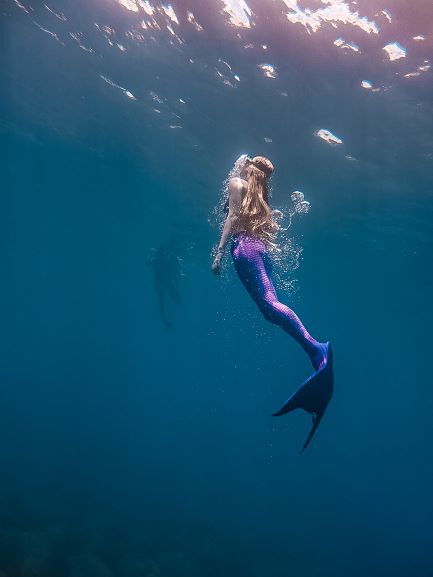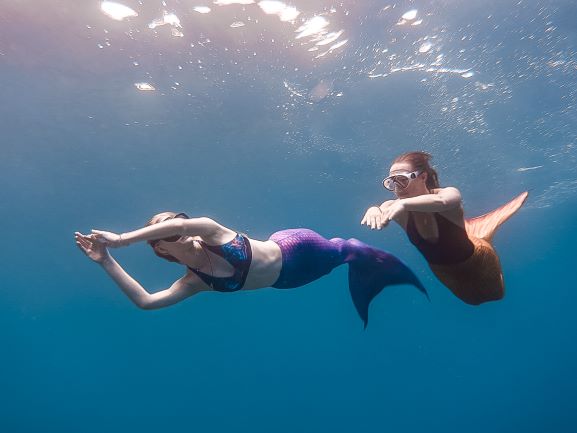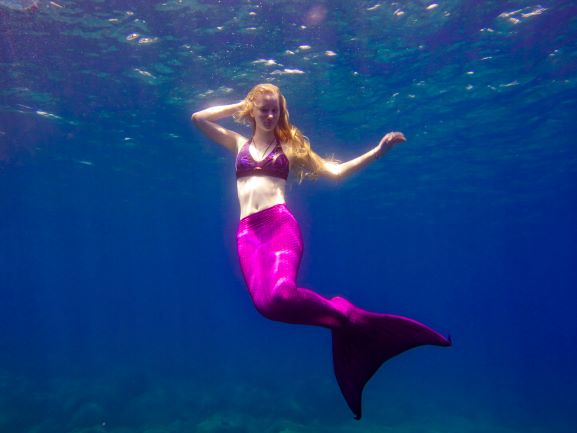Mermaid swimming and mermaids have gained popularity in recent years, with numerous mermaid stories depicted in cinema and television.
Something fascinates us with Mermaids and mermaid swimming.
Different cultures depict mermaids in various lights, but many tales show them to delight in mischief and destruction. Scottish folklore tells of “blue men” overturning ships if sailors could not complete a rhyme. In the Odyssey, an epic poem by Homer, describes sirens luring sailors with their songs, only for them to be shipwrecked.
Tales of mermaids and mermen – mythical marine creatures with the head and torso of a human and the lower half of a fish – have been part of human folklore for thousands of years. The first stories are believed to have appeared in ancient Assyria, although every region of the world has its version of mermaids in folklore. Examples include Greek nereids, Scottish storm kelpies, African water spirits, European melusines, and many more.
Mermaids have featured often in art and literature, with modern audiences perhaps best knowing Hans Christian Anderson’s fairy tale of The Little Mermaid and Disney’s Arielle. The title character, youngest of the Merman-king’s daughters, must wait her turn to reach the age when she will be allowed to emerge from the sea and sit on a rock, there to observe the upper world. The mermaid falls in love with a human prince, and also longs for an eternal soul like humans, despite the shorter life-span.
Mermaids have gained popularity in recent years, with numerous mermaid stories depicted in cinema and television. In the early 2000s, keen mermaid swimmers began to develop their own mermaid equipment, and since 2010, mermaid swimming has attracted both recreational swimmers and professional performers. With its increased popularity, organizations like SSI introduced certifications to ensure that swimmers have the knowledge and training necessary to enjoy mermaid activities safely.
To safely enjoy your mermaid training, you must know what happens to your body when you dive below the surface, and must be followed the Rules for Safe Swimming at all times.
Mermaid swimming means that you will be immersed in water. Sometimes you will be on the surface, and sometimes you will dive underneath it.
The weight of air or water around an object like your body is called pressure. On the surface, pressure is applied evenly in all directions, so it’s usually not noticeable, but pressure increases as we go deeper underwater.
Swimmers who remain on the surface of the water do not need to consider pressure increases, since the pressure of air at the surface doesn’t change much. However, swimmers who descend underwater must understand the effects of pressure on their bodies, and how to respond appropriately.











